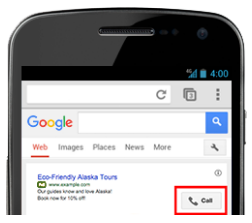How Manufacturers Can Find a Voice That Works in 8 Steps
by MGB2B

You are not a robot. Neither are your colleagues. Not most of them, anyway. So why would you want your company to sound like one? It’s time for you to find the right manufacturer brand voice. And use it everywhere.
The question you might be asking is: where do I start?
You start with a little research. Maybe you’ve done some already. But if you haven’t, there’s no need to freak out. It’s something you can gather fairly easily, using either your marketing staff or an outside agency to help you. The most important part of the research you’re about to do is simple: talk to your current customers. Your customers are your brand. The things they like about you, the reasons they’ve stuck with you for months or years or even decades, and how you have helped them overcome challenges – that is what the research is going to unearth.
This is information you may think you know already. But chances are, you only know part of it. And if the voice you are using on your current website, blog, social media, and sales tools is too dry or mechanical, you are not using your understanding of your customers in the best way possible. Because just like you, your customers are people. They may be steeped in your industry jargon, or they might be on the periphery, but your customers – and your prospects – no matter what their level, need to understand and relate to what you are saying. This is how you drive people into and through your sales funnel.
Here’s an 8-step plan to help manufacturers find their voice, and stick with it. If you are working on a new, overarching marketing plan, it’s a process that you don’t want to skip!
- Interview Key Staff. Assign an outside person or agency to talk to your staff about who you are. While your customers will be the predominant driving factor in creating your voice, your people will also have a role. You need to find out anonymously (so they feel comfortable talking) how they perceive the brand. What works, what doesn’t, and how they would describe what makes your company so great to a friend.
- Interview Your Best Customers. Your core users know you the best. They like you. What do they like? Why are they loyal? They can tell you what differentiates you from your competitors better than anyone else. Maybe they think you are more authentic. Maybe they think you are more buttoned-up and professional. Those things will determine what kind of voice you have more than anything else.
- Look at the Results. Have your marketing team and/or agency work through the resulting information to determine where there is agreement from most or all of the respondents. You’ll find out a lot about your company that perhaps you’ve never heard or seen in writing before.
- Develop Buyer Personas. You can’t have a voice if you don’t know who you’re talking to. Developing buyer personas will help you to figure out the voice of your brand, and how to alter it slightly, depending on which of your target audiences you might be addressing. For instance, the persona for a 30-something purchasing agent in the Northeast will be markedly different from the persona for a 50-something engineer in the Midwest. Your voice will likely have to change for communications targeted at each specific vertical.
- Create a Positioning & Messaging Document. Your research won’t just help you determine your personas; it will also help you determine a positioning statement, an elevator speech, and fleshed out language that might appear on your website and collateral pieces. This is perhaps the most important part, for every marketing material you create from here on out should be based on what comes out of this document. It’s essentially your brand bible.
- Roll Out Your New Voice to the Team. Once you have your bible exactly where you want it to be and you know the voice of your brand, it’s time to spread the good news to your colleagues. This is an often-overlooked step in the process, but it is an essential part. Everyone needs to be singing from the same song sheet, or it won’t work. You’ll have 20 different brand voices instead of one. Each sales person needs to know your elevator speech – he or she can revise slightly based on their own style, but the brand’s voice has to come through to the new audience. And it’s not just about the sales team. It’s about every single person in your organization. The way Jeanie from accounting talks about the company at a family BBQ or the way Joe the Operations Supervisor answers the question he gets at the weekly poker game: Where do you work, again?
- Give Good Content. What you say is just as important as how you say it. When it comes to content and monthly emails, make sure that you are being helpful, offering an opinion, or possibly even entertaining. Insights, tips, expert opinions on current industry events – this type of content helps you both establish authority and sound like someone who can be trusted. Your audience prefers this over a hard sell every time. A CEO is interested in learning how you can help him cut costs more than he is interested in the product itself. So are the director-level staff that answer to him.
- Honor thy Google. Google is constantly coming up with new algorithms that weed out impersonators and reward authentic companies. You need to be ready for it as you work on your company’s SEO. Readability is a key factor that Google takes into account when determining your credibility as a company. Simple is usually better. So as you develop your brand voice, stay away from advanced vocabulary as much as possible. The simpler and more conversational you are, the more authentic a brand you are perceived to be and the higher you rank in a search.
Some of these steps are easier than others. If you don’t have a marketing team that has time to conduct interviews, a dedicated content team, or an in-house SEO expert, you might need to make a few new hires or talk to a strategic marketing agency (or a little of both) to get things going. Finding your voice and developing content that embodies it is essential. It helps B2B brands stand out against competitors as technology, marketing, and the economy continue to evolve. If you get these 8 steps right, your company will be well ahead of the competition.
Continue Reading
A Call to Arms: AdWords Ad Extensions Can Be Your Greatest B2B Digital Marketing Ally
by MGB2B

HEY YOU!!!
Did I catch your attention? One of the overall goals of any B2B digital marketing campaign is to catch the audience’s eye and stand out from the competition. In a highly competitive arena like Google paid advertising, where our opportunities to attract quality attention are governed by strict rules like not being able to write something cheesy like “HEY YOU!!!” in an ad’s headline, and even stricter character limits, although this is getting a bit better lately with Google’s addition of new Expanded Text Ads, finding a way to separate yourself from the playing field can often be daunting. But fear not: Ad Extensions are here!
Any AdWords marketer worth their digital salt knows about ad extensions. They’re those complimentary bits of information that can show next to or below a text ad. There are a wealth of these extensions, and each allows the marketer the opportunity to give their audience a bit more info connected to their ad. But let’s focus on two that often go overlooked when setting up a B2B digital marketing campaign in AdWords.
AdWords Ad Extensions: Your Greatest Ally in the Fight for B2B Audiences’ Attention
Call Extensions: Call extensions allow you to show the phone number of your company alongside a text ad. This is a great way to improve your audience’s engagement with your ads. If a customer is using a desktop computer, your text ad will show your company’s phone number below the headline. If they’re searching on a smart phone, a “Call” button will show next to the add, allowing the customer to call you directly from the Google search results page with just one touch of their screen. This can be particularly handy in the B2B market, where an on-the-go salesman or contractor is searching for your company’s offerings.
Callout Extensons: Callout extensions run below a text ad providing added details about your company or offers, like the “Free Shipping” etc. in the ad below. These extensions offer you a fantastic way to highlight the key elements of your business in a structured line, and can be set up on an account, campaign or ad group level. And unlike their cousin Sitelink extensions, Callout extensions aren’t a clickable link and don’t require a unique attached URL. This allows you to single out special offers and calls to action, while still directing the audience to the landing page you’d originally chosen for your text ad. When trying to catch the attention of a busy B2B searcher, this can make or break an ad’s performance.
While both of these extensions offer their own specific audience engagement opportunities, they also provide an even more valuable service: they grab the searcher’s attention and make your ad stand out from the rest. On a search results page any available space is valuable, and both of these extensions allow you to take up more space than a stand-alone text ad would. And they add an air of authority and credibility to your ads, encouraging click confidence in your audience.
Historically, ads that show extensions like these can expect to see above average click-thru-rates and lead to conversions with lower cost-per-acquisitions, which are metrics any B2B digital marketer likes to see. Couple Call and Callout extensions with a well written, relevant text ad and you’ll be seeing better return-on-investment in no time.
The B2B paid advertising landscape on Google can often fell like a battlefield. Call on these ad extensions to help you win the fight! Need reinforcements? Drop us a line.
Continue ReadingEverything You Ever Wanted to Know About Taglines But Were Afraid To Ask
by MGB2B
The tagline. It defines your brand. Maybe you want it because you are the Nike of the components manufacturing world. Or the Apple of Commercial Construction. Or maybe you’re certain that you don’t need a tagline; everyone knows they’re pointless, right? You’re likely somewhere in the middle. However you may feel about taglines, this list of Frequently Asked Questions can help guide you in the right direction as you decide whether or not to have one and the best way to approach it.
Continue Reading

